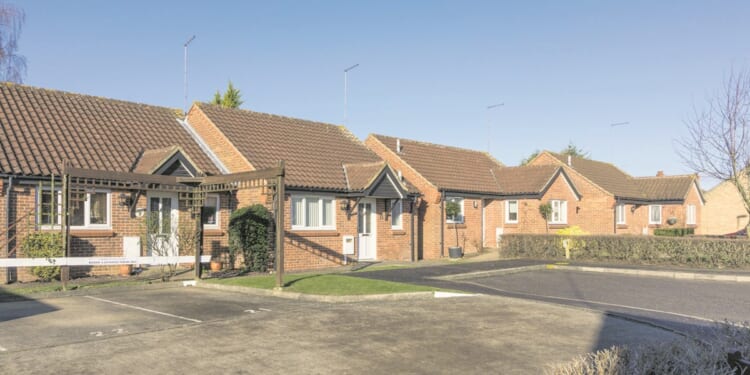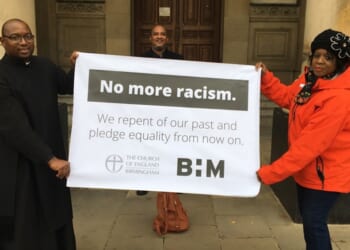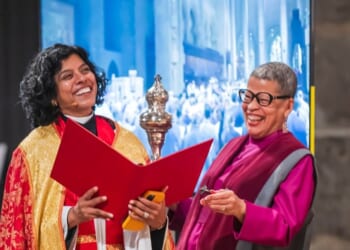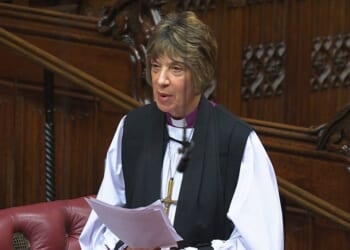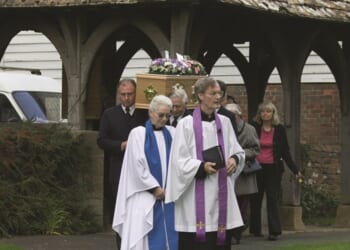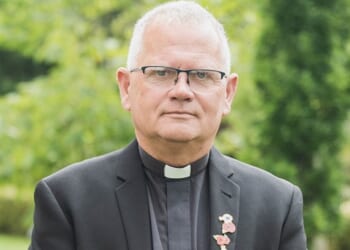DEMANDS for improvements to the clergy pension bore fruit in July when the General Synod approved what Church House billed as a “radical and expansive package of measures”.
Under new rules currently being drawn up, the pension will be set at two-thirds of the national minimum stipend (NMS). Alongside other improvements, this would provide a full clergy pension, after 40 years, in excess of £20,000 a year in today’s money, which together with a full state pension would give an income in retirement of more than £32,000 per annum.
The changes will be applied retrospectively. All those who have accrued service since 2011 will see their pension increased. But, as the chair of the Pensions Board, Clive Mather, told the Synod, implementing these changes will entail a “mind-bending” set of individual calculations. It could take until April 2027 (or later) to get all changes in place.
The Church of England Funded Pensions Scheme (CEFPS) — the occupational pension scheme for stipendiary clergy and certain other office holders — provides pensions to clergy for service from 1998 onwards. Pensionable service before this date is covered by the past-service scheme funded by the Church Commissioners. This means that clergy with service before 1998 will have a mixture of benefits under the two schemes. (The Pensions Board administers both.)
The CEFPS is a non-contributory defined-benefit scheme: each member is guaranteed a lump sum on retirement and a monthly income in retirement for the whole of their life. Any surviving spouse or civil partner is guaranteed a pension for the remainder of their life.
The size of the pension that members receive depends on various factors, including the number of years of pensionable service, and the benefit structure in place at the time of that service. The starting pension is based on the National Minimum Stipend (NMS).
SINCE 1998, changes have been made to the scheme twice to reduce the cost to dioceses (the bodies largely responsible for paying into it). In 1998, the benefit structure was the same as that set out in the past-service scheme: members had to serve for 37 years to be eligible for a full pension, which was set at two-thirds of the NMS. This accrual rate was changed in 2008 to 40 years and in 2011 to 41.5 years. Furthermore, in 2011, the pension rate was reduced to half of the NMS and the “normal pension age” increased from 65 to 68.
Both sets of changes affect only pension earned after the date of the change.
The improvements approved at by the Synod in July, will mean a return to the two-thirds of NMS rate, and clergy will have to serve a minimum of 40 years to be eligible for the full pension. Pensions will be based on the current year’s NMS rather than that of the previous year, as is currently the case. In tandem with the pension improvements, the NMS will be increased in April 2026, to make up for inflation in recent years, providing a further boost to pensions. All service since 2011 (when the pension rate was cut to half of the NMS) will be treated at the two-thirds level.
For serving stipendiary clergy, pension earned since 2011 will increase by 61 per cent. Pension earned before 2011 will increase by around 16 per cent, as a result of removing the one-year lag plus the higher NMS. The notional full-service pension after 40 years (in excess of £22,000 a year in today’s money) will increase over time as the NMS is lifted further. Retirement lump sums — which are usually tax-free — will also increase.
For retired clergy already in receipt of a pension who were still serving after 2011, a special increase to the pension in payment will be enacted, reflecting the retrospective application of the two-thirds of NMS rate. This means that pension earned since 2011 will be increased by around 38 per cent. For recent retirees, there will be an additional increase to reflect the uplift in the NMS (which has not kept pace with inflation in recent years).
The changes also apply to a widow or widower’s pensions, if their spouse or civil partner had service from 2011.
IN FEBRUARY, the Synod will be asked to approve new rules for the pension scheme. Assuming that these are carried, the aim is to start to implement the improvements from April 2026. The Pensions Board says: “We appreciate your patience while we work through the detail.”
It wrote to all members in July to explain the process. If clergy have yet to receive a letter, they should check their PensionsOnline account. The Board has said that it is not currently able to provide individual calculations, but will write as soon as possible. The online retirement-estimate tool will be updated only once the rules change is approved in February. What is certain is that clergy who served after 2011 will receive an increase.
When it comes to clergy who are coming up to retirement, the Pensions Board advises that, based on the current proposals, those looking to maximise their tax-free lump sum “may find it more advantageous to take your pension after April 2026”.
The private member’s motion approving the pension improvements, carried in July, also called for the Archbishops’ Council to instigate a “a comprehensive, independent review of what is needed to ensure that clergy and their dependants are supported in retirement with dignity and fairness — specifically in relation to both pension provision and housing”. This will happen in parallel with the improvements to the pension set out above.
Housing
IN A recent study of working-class clergy, Let Justice Roll Down Like Waters, anxiety about retirement housing surfaced as a strong theme (News, 6 October 2023). Many participants were fearful about retirement, and some noted “assumptions made that clergy are renting out family property”.
One participant observed: “Unless you’re already middle-class or have housing somewhere . . . this is where the rhetoric that comes from the leadership can become toxic, because they’ll talk about, ‘oh, the calling to be a priest as a life of sacrifice. . .’ But, of course, the life of sacrifice is very different if you’re middle-class.”
In the same year as the study, the Pensions Board reported “almost unprecedented levels” of demand for retirement housing from the Church, driven by an increase in retirements, and the knock-on impacts of the pandemic, which saw some clergy delay retirements or bring them forward (News, 13 October 2023). It warned that the current scheme, the Church’s Housing Assistance for the Retired Ministry (CHARM), which enables clergy to rent a property from the Board, would be too expensive for the C of E to fund “in perpetuity”.
A consultation — Enabling Choice — was conducted, which asked clergy about various options, with a focus on “enabling home-ownership during ministry, through overcoming barriers to level the playing field between clergy and their peers” (News, 24 November 2023).
Among the ideas floated were the donation of a lump sum of up to £1000 as a “kick-start to saving” at ordination, and the Church’s partnering with a bank or building society to offer clergy access to a 95- or 100-per-cent mortgage, for which the Church would provide part of the property value as security.
Another option would be for the Church to offer a means-tested contribution of up to £25,000 towards a deposit. Responses indicated a good level of support among clergy, but 94 per cent agreed that there would “continue to be a need for the Church to provide its own retirement-housing option to some retiring clergy”.
Currently, about 56 per cent of serving stipendiary clergy own property. Last year, the Pensions Board reported that more may need help with retirement housing than previously forecast, after a new survey found that 69 per cent of respondents believed it unlikely that they would own a property on retirement (News, 5 July 2024).
Spending plans announced in the past year suggest that the Commissioners are aware of the need for increased investment, and signal a change of heart with regards to the CHARM scheme. In June, it was announced that financial support of more than £95 million for clergy retirement housing had been agreed for the 2026-29 triennium.
Of this, about £65 million will go towards the existing retirement-housing scheme, “both to upgrade existing Church-provided retirement rental properties, and to enable these to continue to be an option for new applicants — providing long-term security of tenure on a below-market rent” (News, 13 June).
The remaining £30 million will be used to help clergy to buy property during their ministry, through new Church-backed mortgage products with banks or building societies, and to provide access to free independent financial advice at crucial stages in ministry.
Last month, a spokesman for the Pensions Board said that the first of the new products would be available in 2026.

